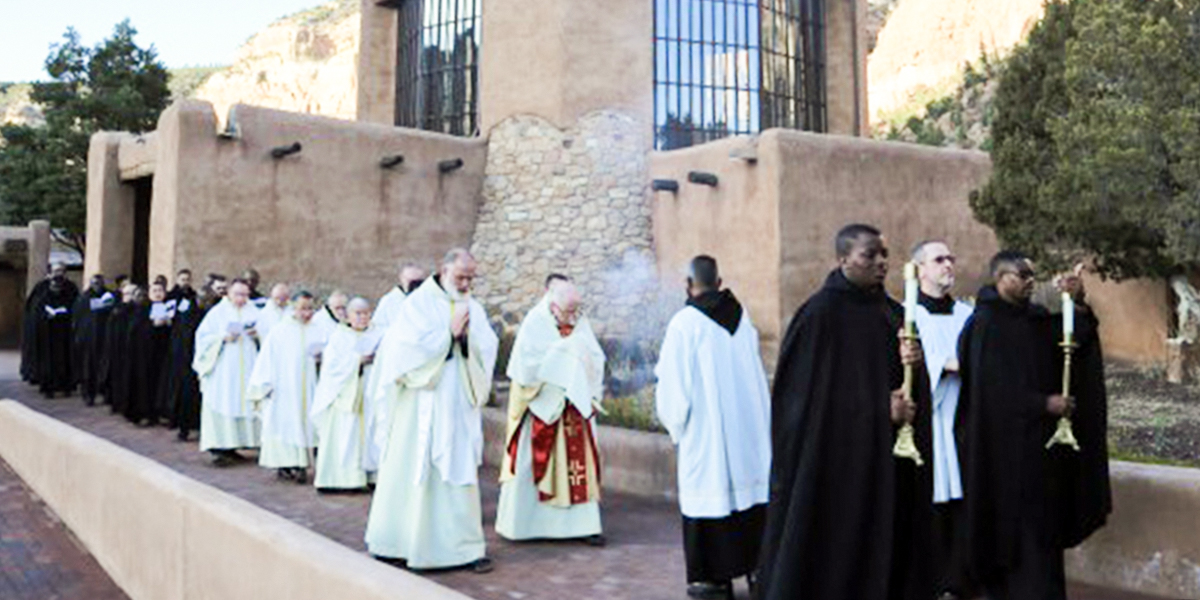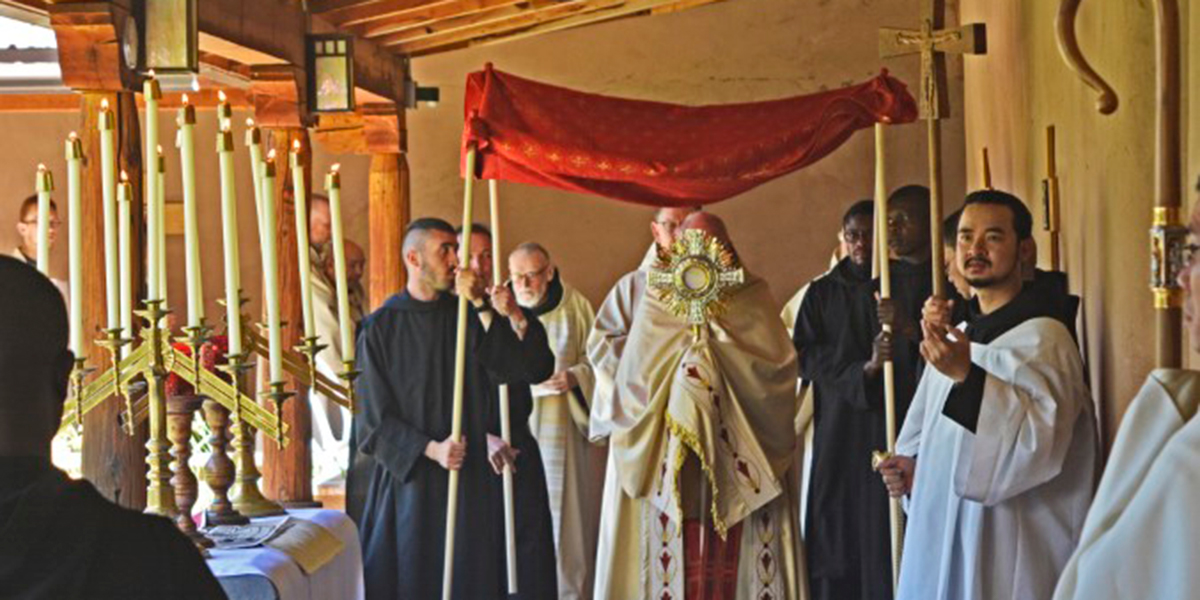There are some thriving monasteries spread around the nation.
Lenten Campaign 2025
This content is free of charge, as are all our articles.
Support us with a donation that is tax-deductible and enable us to continue to reach millions of readers.
Religious life has long played an essential role in the life of the Church, both in the graces the prayers and sacrificial lives of religious draw down on the Church and society, and in the example of Christian perfection religious can provide laity. Though not as prevalent as past decades, there are still vibrant, healthy communities at work in the U.S. that continue to positively impact the laity.
Aleteia spoke with two long-time leaders of such communities, asking the question: What can the laity learn from those in religious life?
Our Lady of Clear Creek Abbey is a 20-year-old Benedictine monastery located on a remote 1,000-acre wooded site in eastern Oklahoma. Its 67 monks have prayer as their chief apostolate. As their website indicates, their community “is to be counted among the institutes entirely ordered towards contemplation. By virtue of their vocation, the monks devote themselves to God alone in silence and solitude, in constant prayer, and willing penance.”
They practice the “three 8s” daily: eight hours of prayer, eight of work and eight of rest. Their day begins at 4:50 a.m. and ends at 9 p.m.; the monks pray in Latin and celebrate Mass according to the Extraordinary Form. They welcome laity who live nearby to come to the abbey to participate in the community’s Masses and prayers.

Abbot Philip Anderson believes the laity who visit the community and interact with the monks can benefit in multiple ways. When they come for Mass or the Divine Office, for example, in observing the reverence of the monks and their silence in church “they can experience a sense of transcendence that can be lost in a casual liturgical setting. There is a beauty in that, and experiencing the beautiful makes them want to live for God.”
While the monks do preach, offer spiritual direction, and lead retreats, they do not have pastoral duties and primarily live the lives of contemplatives. Hence, much of what the laity can learn from them is by their example.

Read more:
21 years old, and entering a cloistered convent? An interview with my little sister
As the monks do not marry and strive to live a chaste life, the laity can have a greater appreciation of the virtue of chastity. The monks demonstrate simplicity by farming, ranching, and living close to nature. They are joyful (and often young), another positive reflection of lives dedicated to the pursuit of holiness. Father Abbot noted, “If we were grim and sad, that would be a counter testimony of our Faith.”
The Monastery of Christ in the Desert is located in the wilderness of Chama Canyon, 75 miles north of Santa Fe, New Mexico. They have 60 monks of varying ages who follow the Rule of St. Benedict. Their day of prayer and work begins at 4 a.m. and ends at 8 p.m.
They desire to be a self-sustaining community, selling religious items and operating a guest house for visitors. They leave the grounds only when necessary, such as for medical appointments or to purchase food.
Abbot Emeritus Philip Lawrence, who led the community from 1976 to 2018, noted that when a monastic community is functioning well, “lay people come to visit and can almost feel the love of Christ radiating to all who come to the monastery.”

Lay people see that the monks are committed to a life of prayer, but also “serving at table during meals and reflecting joy in serving both the guests and the monks. They see the interaction of the monks both in the church and in the refectory [dining room] and recognize that these monks are humans with a complete human spectrum of emotions and thoughts and capacities.”
When lay visitors learn about the hardships of monastic life, he continued, they often wonder why a young man would choose such a life. He said, “The response of the monk is almost always: ‘I sense that God is calling me.’ That is a huge witness to the presence of God in our world.”
To those who wonder why the monks rise so early for prayer, he explained, “We follow a disciplined life because we have discovered that it helps us remain faithful in the search for the living God.”
Lay visitors to the monastery, he said, “come because of some sense of God in their lives but are usually a bit reluctant to say so very openly. The monks’ response often allows a guest or visitor to speak of God freely.”
Visitors are also impressed with the faithfulness of the monks to the Church, Her leadership and Her teachings. He explained, “We are Catholics and we accept all of the teachings of the Catholic Church. We have huge respect for the Holy Father and for proper authority in the Church. This aspect is particularly strong now when so many guests and visitors have seen the sinful failings of leadership in the Church.”

Read more:
What happens when religious sisters get back in the classroom








